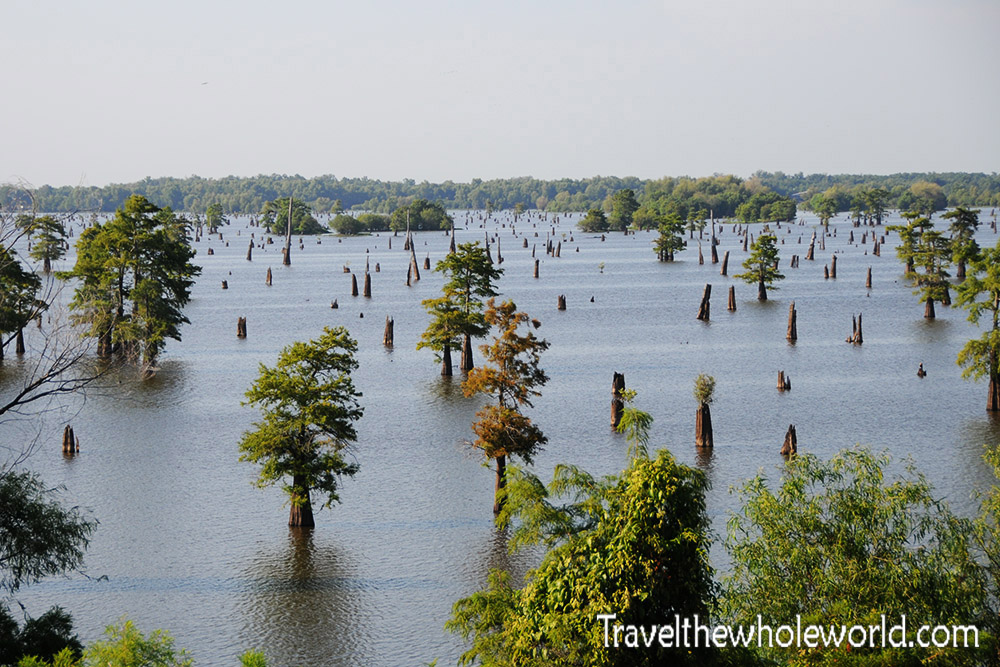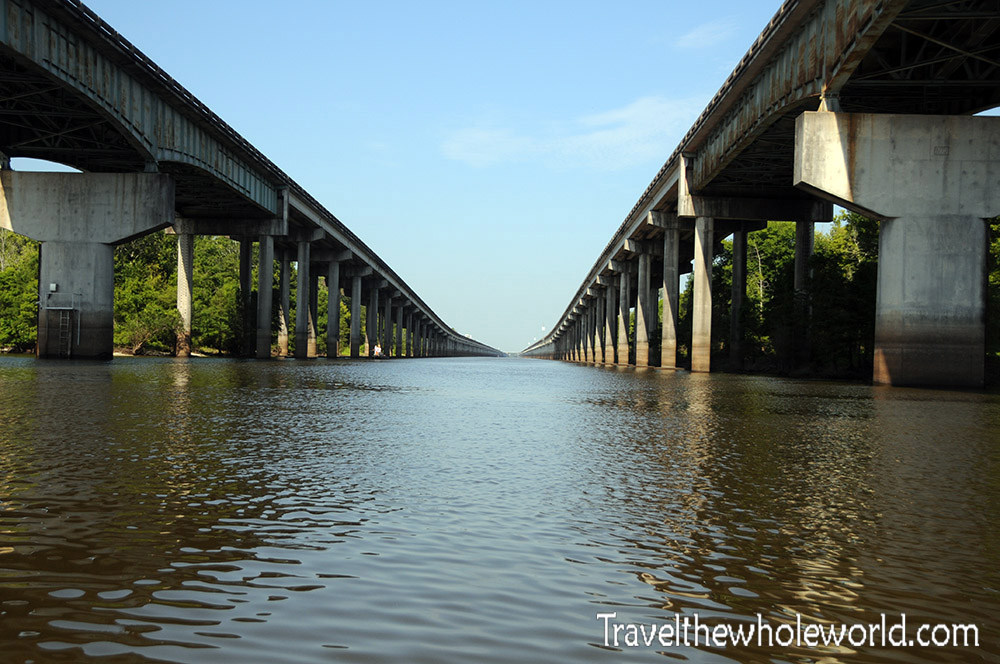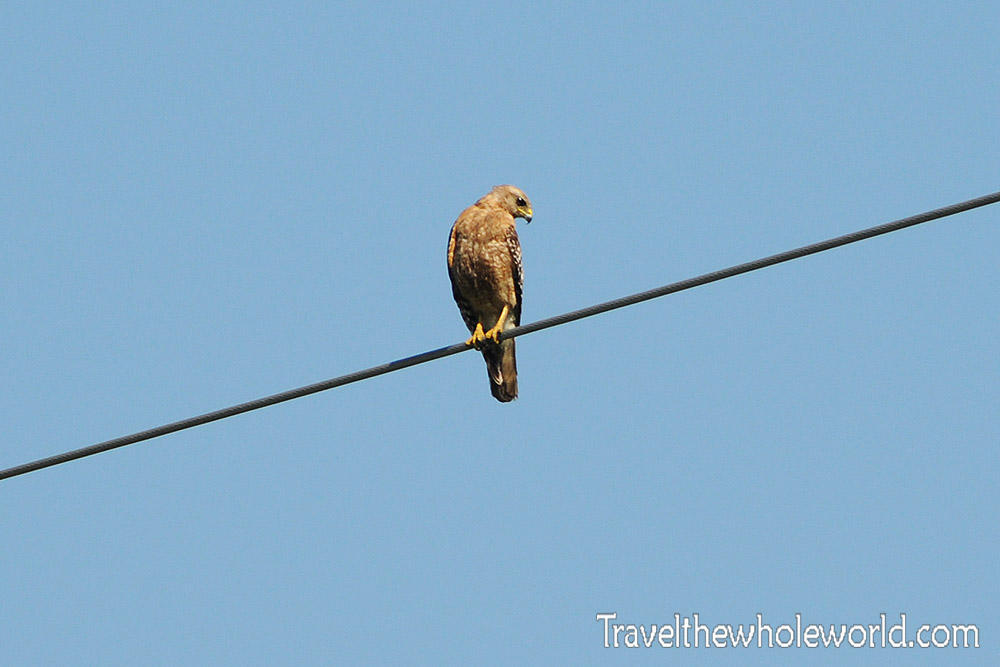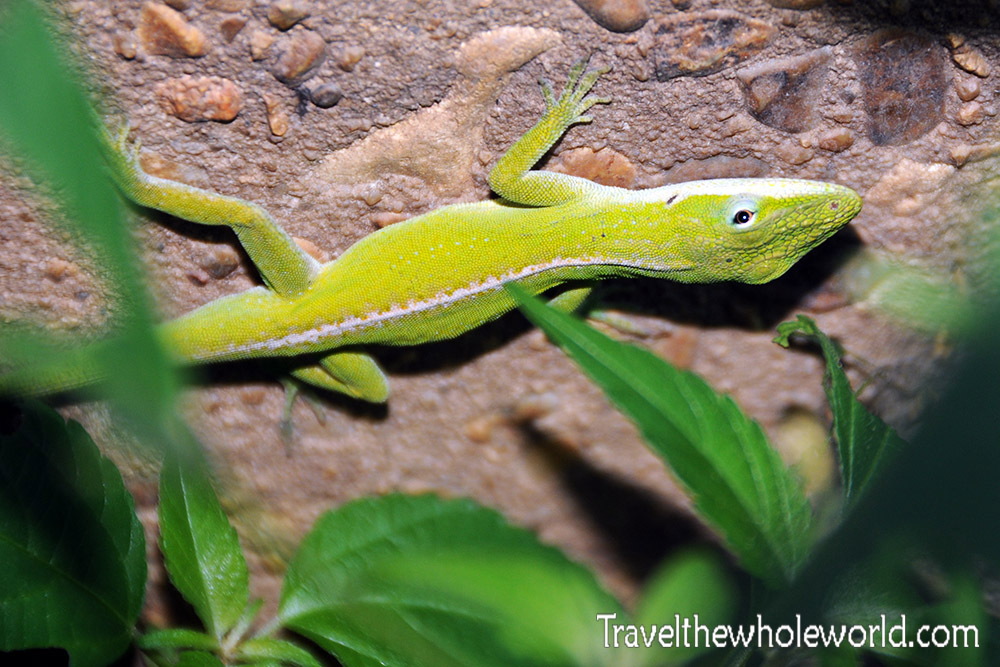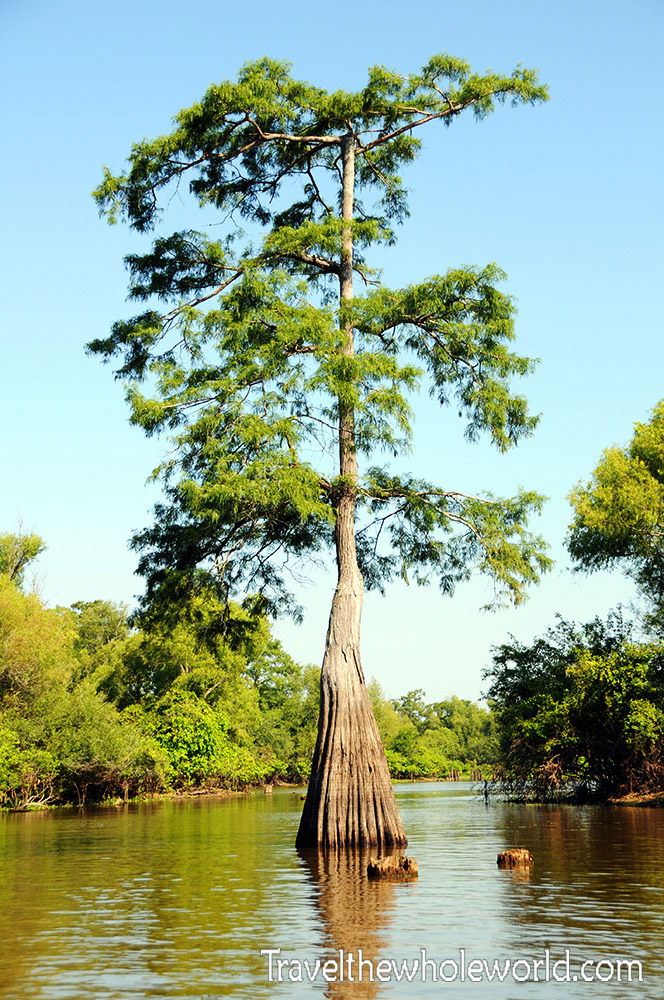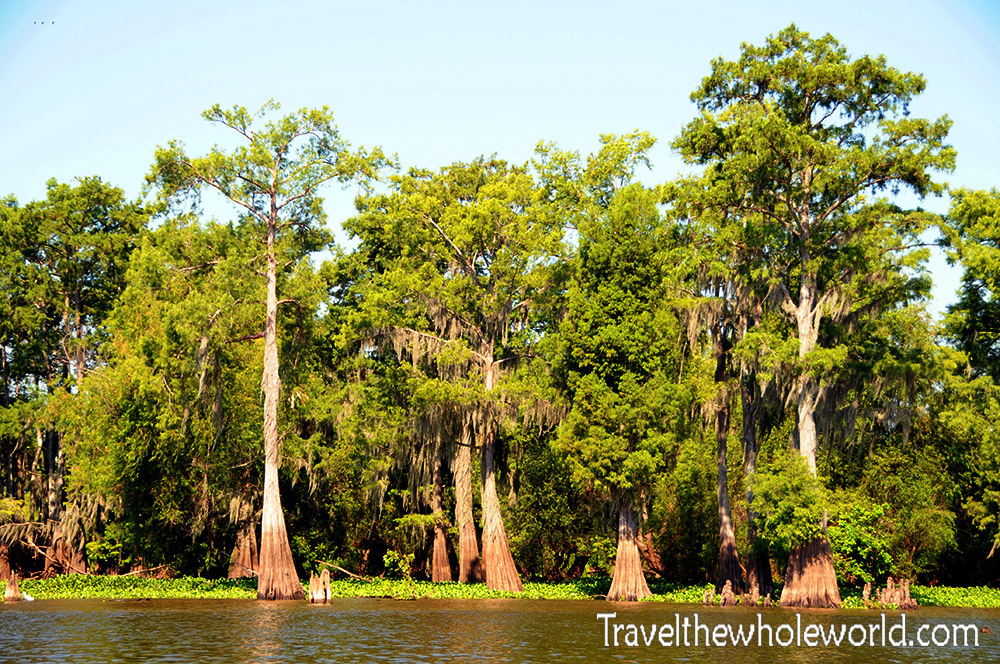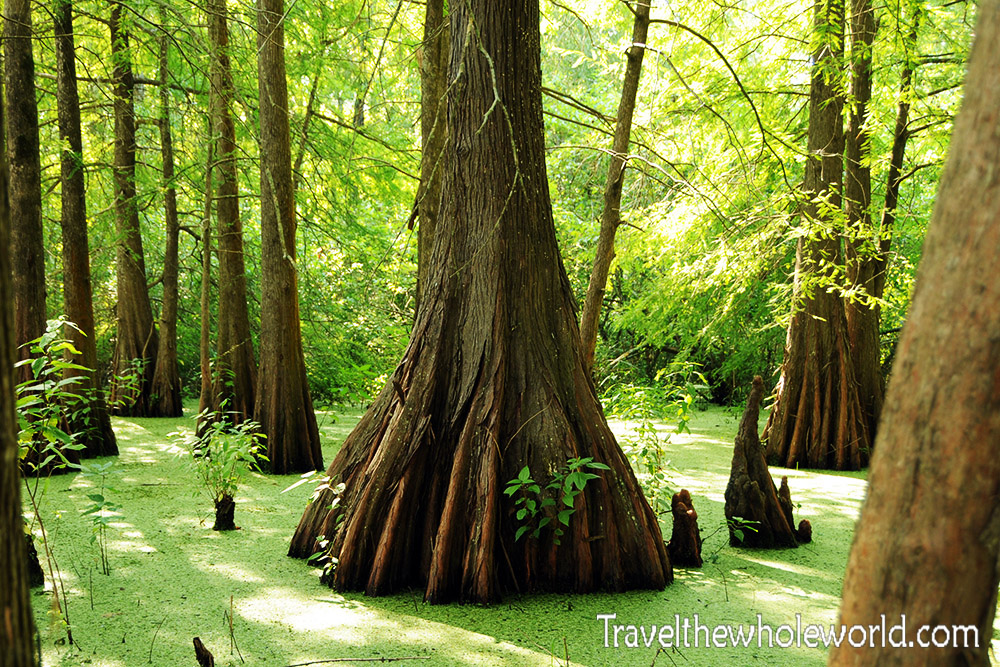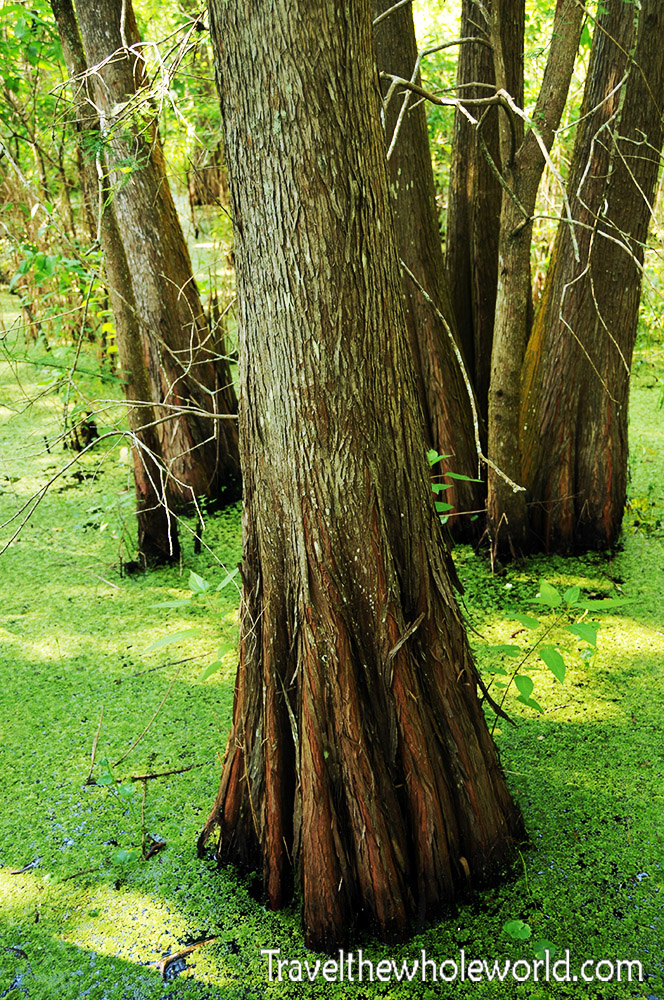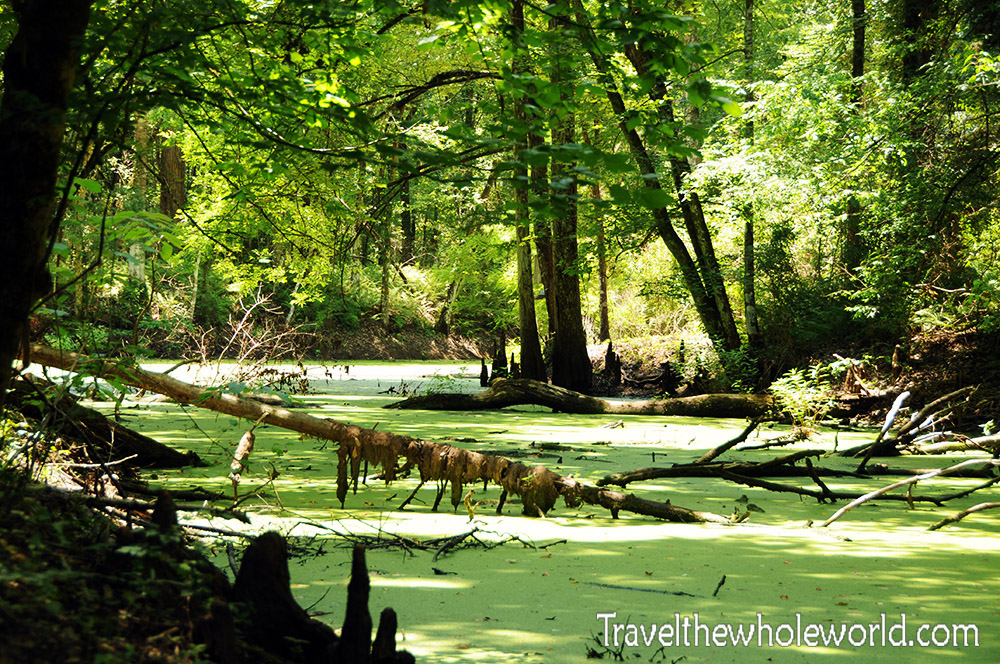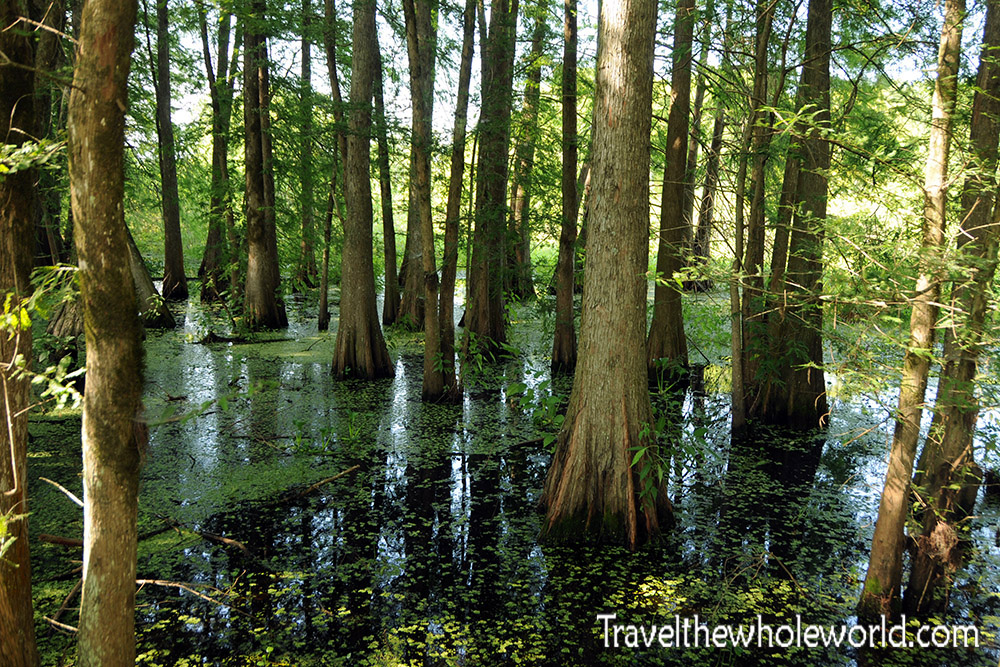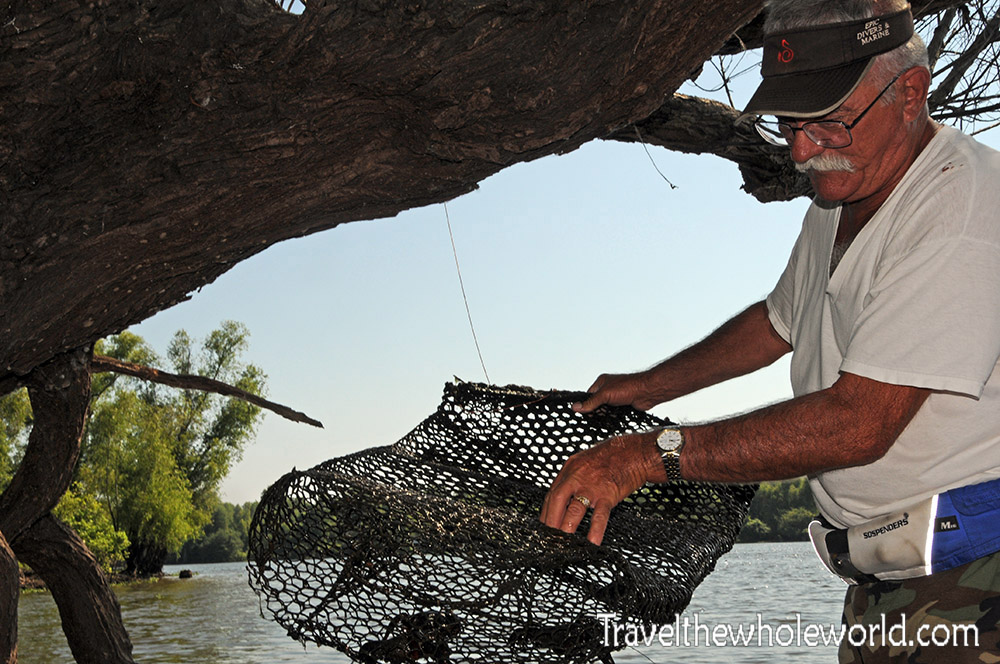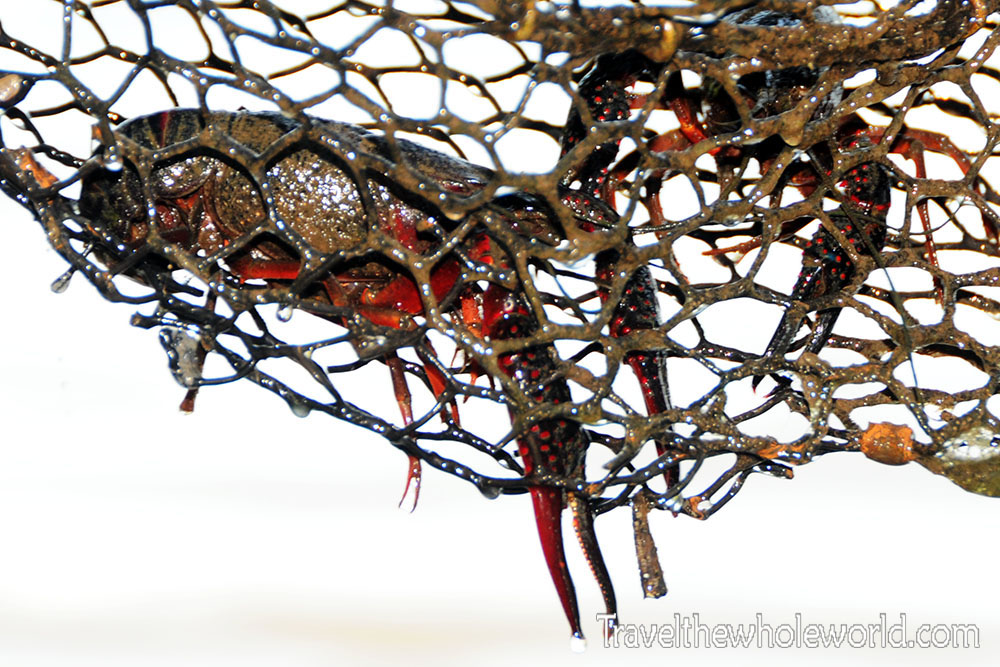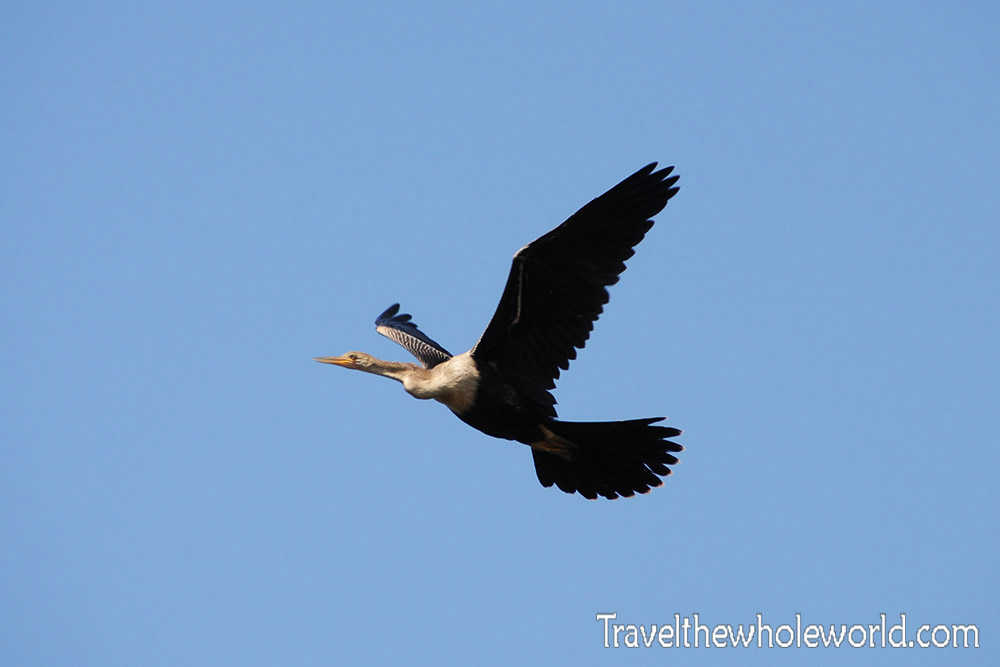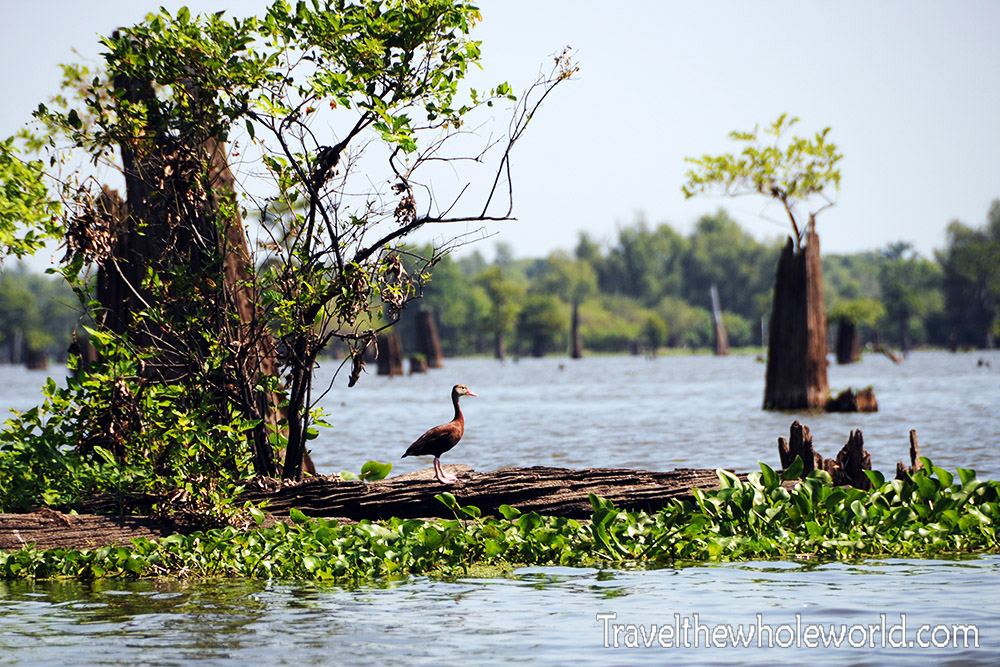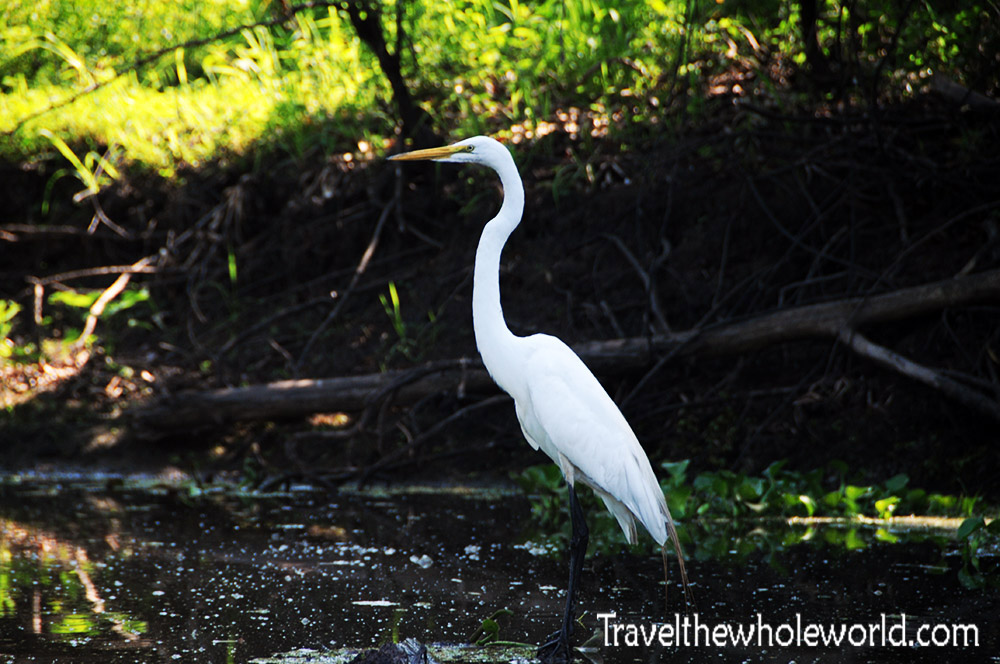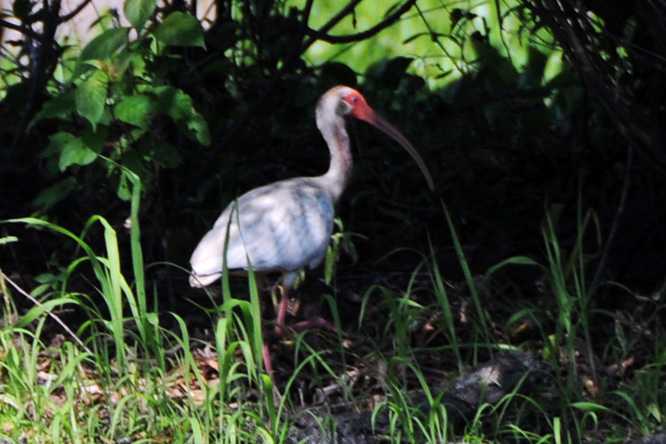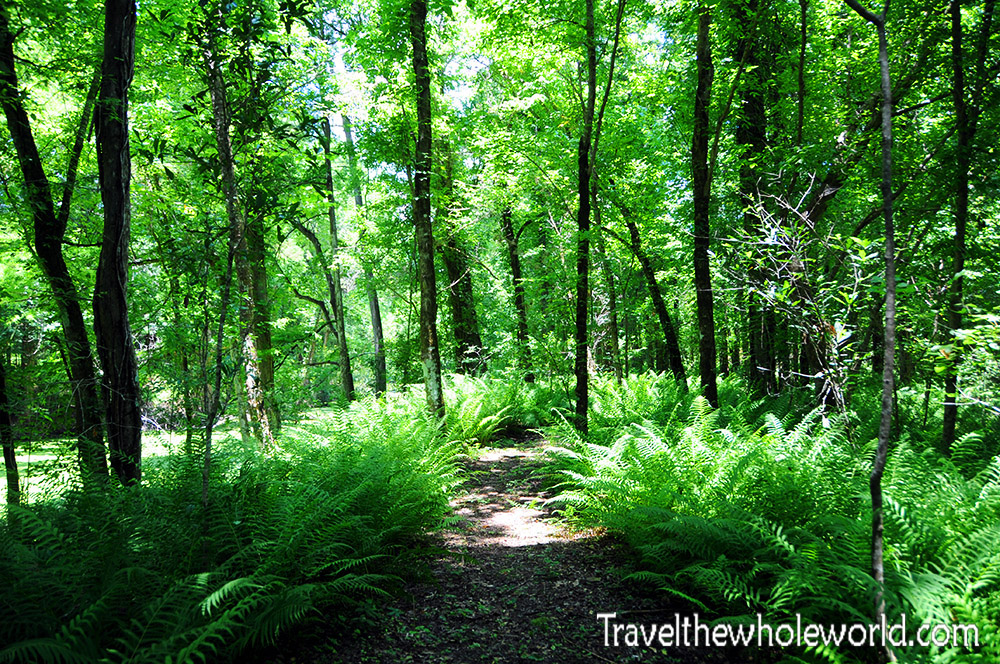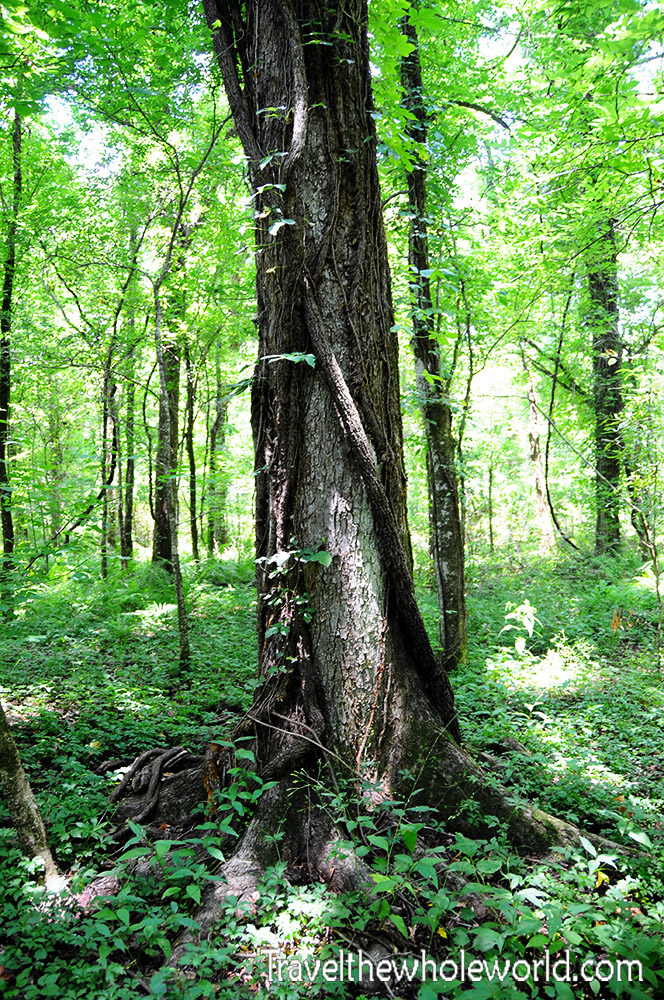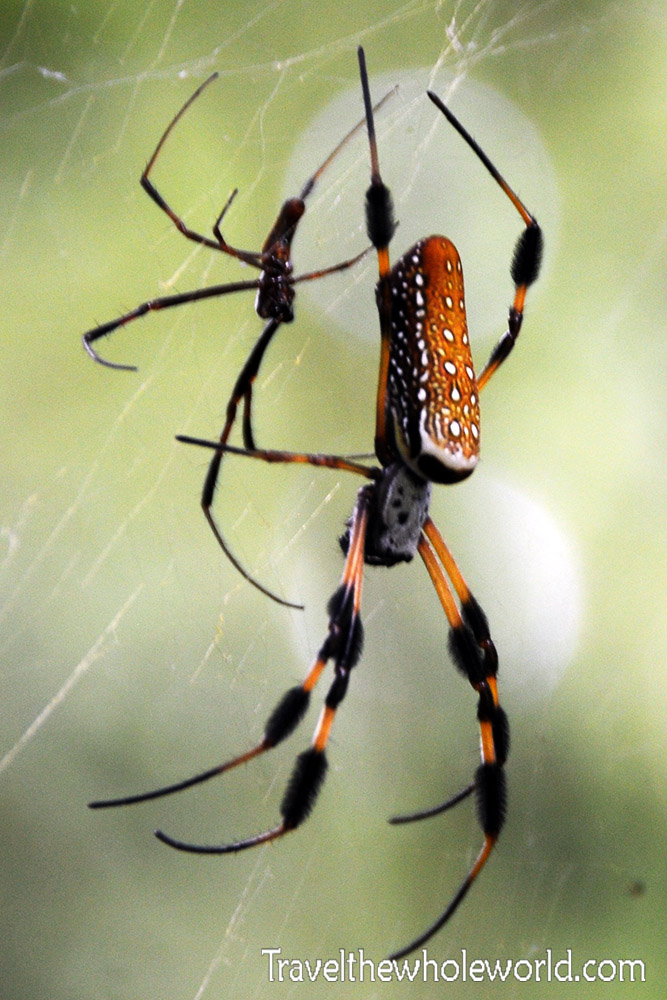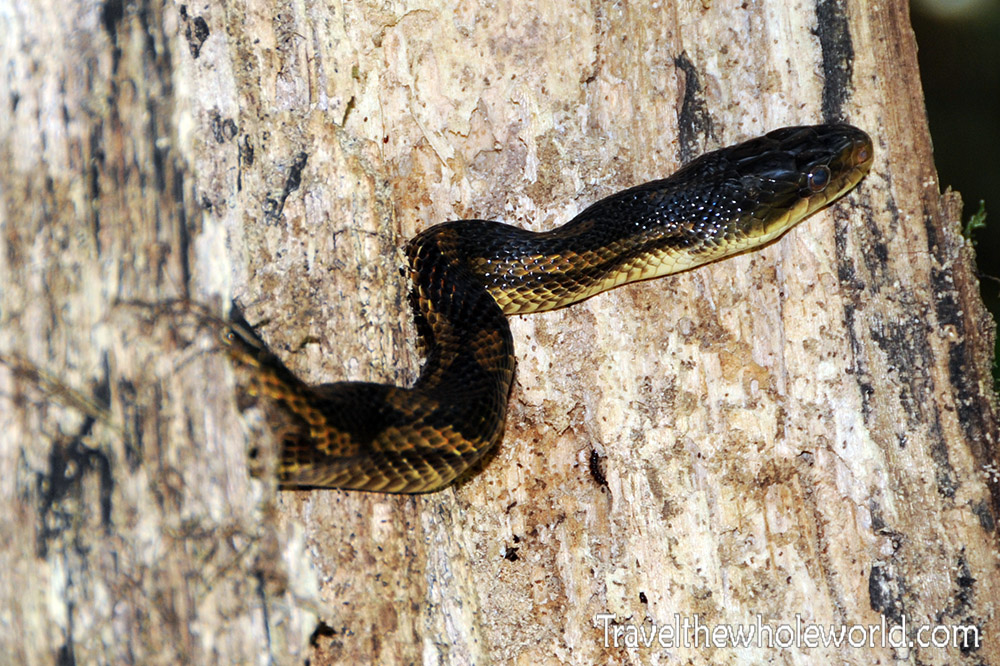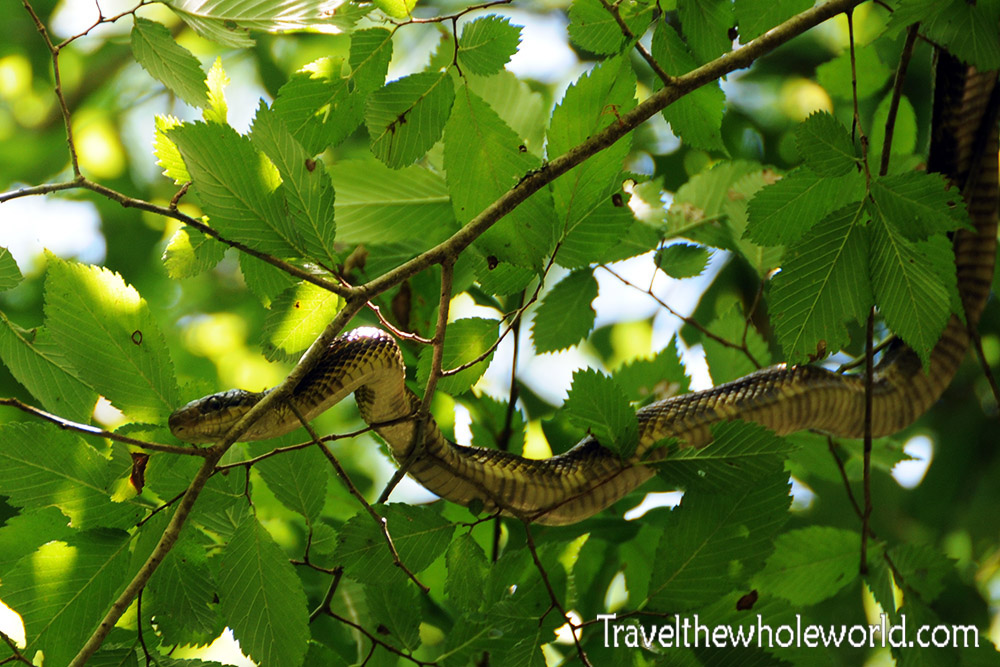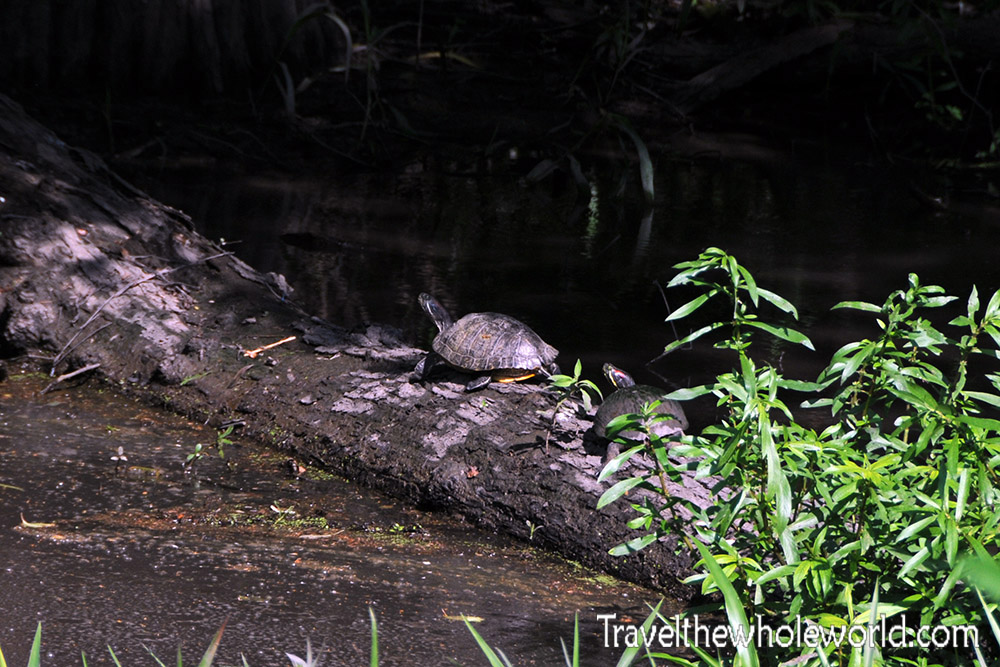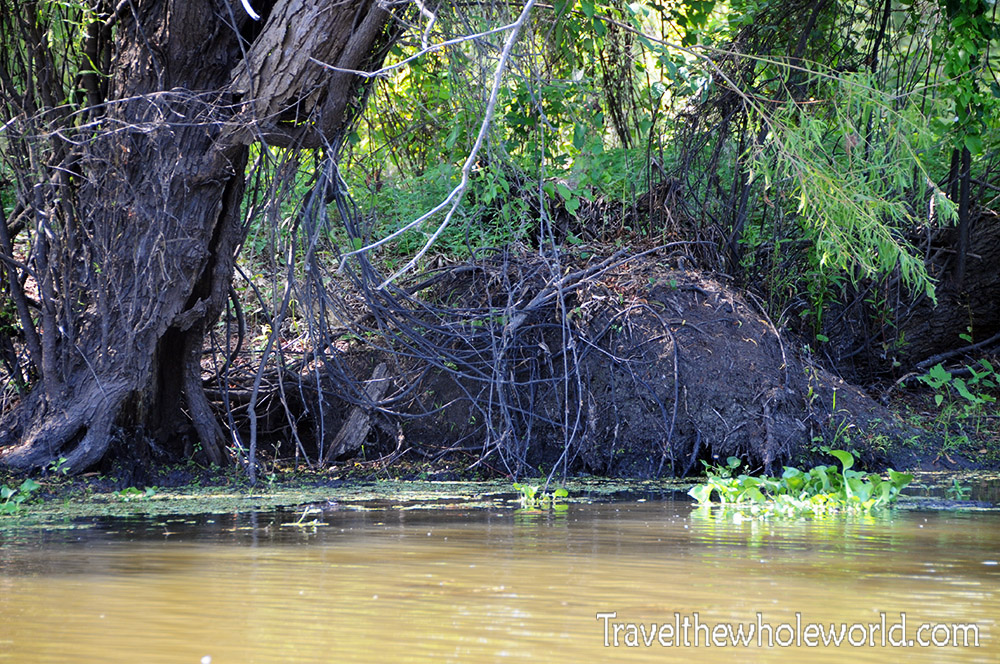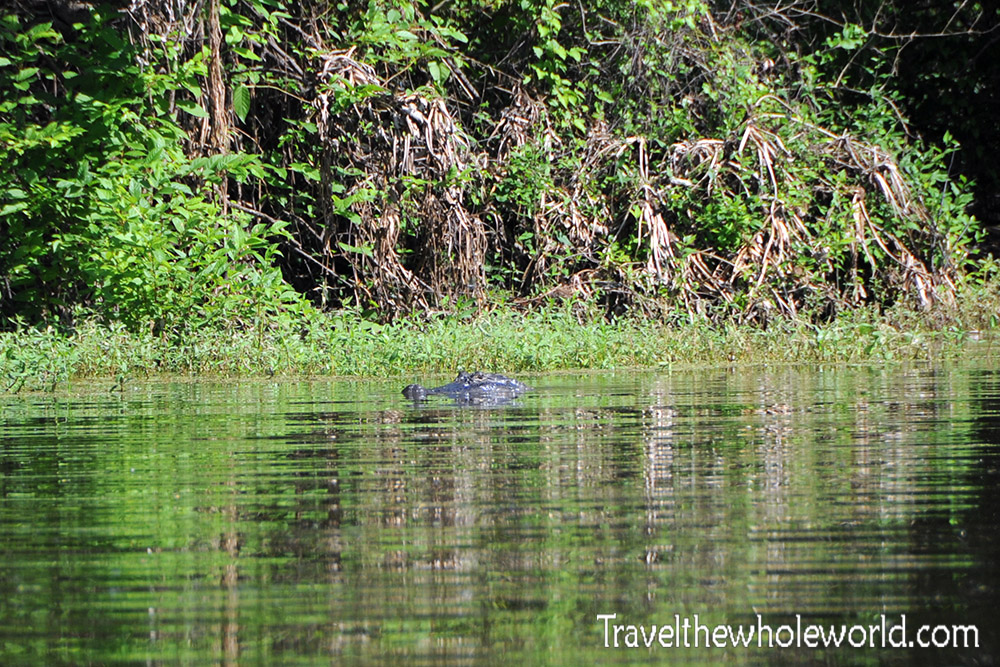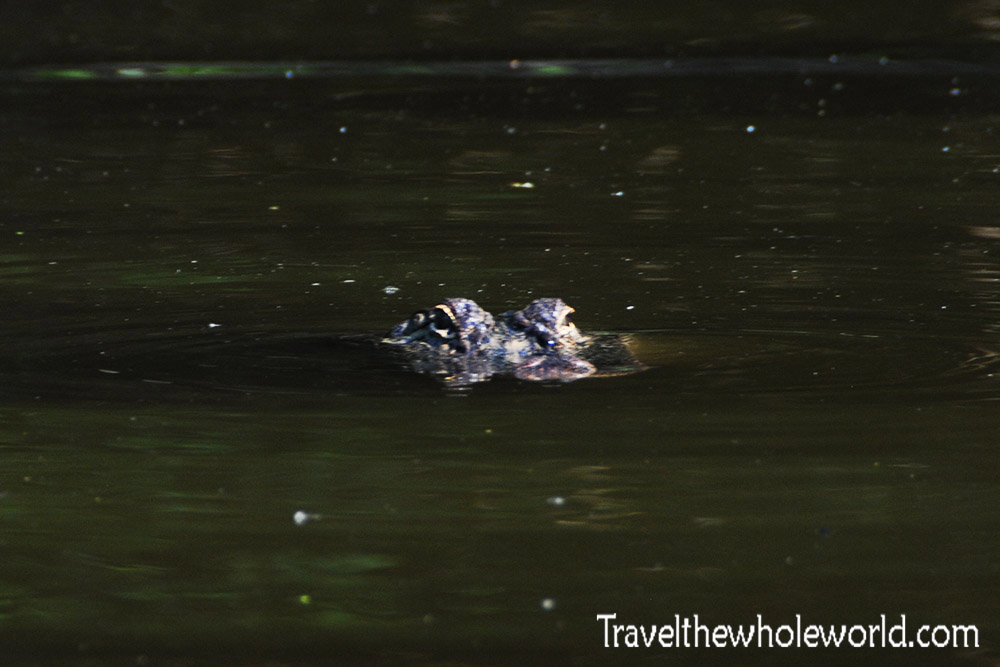Visiting the Atchafalaya Basin
West of New Orleans and Baton Rouge is one of the most amazing places in the United States. Nearly a quarter of Louisiana is made up of swampland, and right in the south center of the state is the Great Atchafalaya Basin. Locals here will proudly tell you this is the largest freshwater swamp in the world. While this doesn’t seem to be true, there isn’t any denying that this place is enormous!
The Atchafalaya swamp is so large there is no way to bypass it with roads and power lines. Highway I-10 has no choice but to go straight through it via the Atchafalaya Basin Bridge. Getting under the bridge itself and peering straight through the center gives you the illusion that this bridge continues forever. These parallel bridges run over 18 miles making them one the longest bridges in the world.
There is so much wildlife here that even along the bridge I spotted a large hawk looking out for prey and the bright green anole below. The hawk was using the power lines as a good vantage point over the vast Atchafalaya swamp. The anole was seen climbing a low point of one of the bridge’s giant columns. This is the first time I’ve ever seen an anole in the wild. They are known for being good pets and famous for extending out their dewlap when mating. We even got to raise a few of these in class in elementary school!
While the Atchafalaya basin may not be the largest swamp in the world, there is no question it is the largest within the United States. The swamp is only about 15 miles wide but is over 100 miles in length. With 1,500 square miles you can imagine that within the Atchafalaya basin there is a lot of diversity. Bald cypress trees seem to dominate most of the swamp like the lone cypress above and grove below.
For some reason I’ve always been in love with the unique landscape of swamps. Maybe it’s the haunting ways trees rise out of dark waters, or the dense vegetation teeming with wildlife. I’d love to do a full week trip canoeing and camping here; hopefully one day I’ll make that a reality. The surrounding photos are other swamp scenes I came across while hiking trails.
You might be able to tell that these two pictures above and below are a little bit different than the two previous photos. This hiking trail that I was on was more on solid ground with some slow moving creeks and natural canals passing by. Parts of the swamp like these are made up of islands that have vegetation and animals that you would normally find further inland. What amazes me about the Atchafalaya is that it’s home to a large population of bears. The Louisiana black bear as they call it is a subspecies of the American black bear which is listed as endangered. Other animals of course are the American alligator, deer, raccoons, beavers, and countless species of birds, amphibians and reptiles.
The Atchatalaya is still large and remote enough that some people still live off the land here. Sparsely populated areas dense with some of the best fishing and hunting in the country make the basin an easy place to have a simple life. The majority of the swamp tours depart out of New Orleans going to the surrounding areas. The Atchatalaya of course gets its fair share of tourism, but for the most part it seemed that others boats were locals fishing or catching crawfish. My guide in the swamp has lived here for over 50 years and has even appeared on TV a few times. Above is an abandoned crawfish trap that he showed me after pulling it out of the water.
Even though the trap was abandoned it had still captured a few crawfish. My guide told me that crawfish typically sell for four dollars per pound. In addition to crawfish trapping he also enjoys fishing. He boasted about bringing back 88 pounds of fish on a single trip once.
The next few photos show some of the several species of birds I came across. These photos are only what I caught with my camera. I saw dozens of other species of birds but they were either too far away or I ended up with a photo that wasn’t worth posting. I’m not sure of the species of the giant bird above or the smaller guy below. More than likely I was told while in the swamp but forgot!
I do at least know for sure that the bird above is the common white heron. I see these guys everywhere, from my neighborhood back in Virginia to as far off as Somalia! The bird below is the white ibis and is known for its large curved beak.
I definitely enjoyed the boat tour I took which is where I saw all the waterfowl. For the solo forest hike I had mixed feelings. First off after hearing about some of the gigantic alligators that live in these waters I was worried about coming across one while on the trail. The trail above was right along the water so there seemed to be some risk. Another trail I did later proved I wasn’t being paranoid. There was a large size that said not to continue hiking due to overly “aggressive alligators in mating season”. For all I knew the other trail hadn’t had a sign posted even though it might have been equally as dangerous.
Despite being very close to water at all times, the vegetation was so thick that it often appeared that I was in the middle of the woods. This tree above looks like any inland tree to me, and from here I couldn’t see the bald cypress or other water based plants. Because it was so thick and hard to see was why I was worried about stepping on an alligator.
Luckily I didn’t run into any alligators, but I did have to remove several spider webs with my face. Some of them had gigantic colorful spiders running away inches from me after I almost accidentally ran into them. I felt somewhat lucky to not be bit. This species name is the Golden Silk Spider; harmless to humans other than a painful bite or swelling. A more friendly bug below is the large eyed click beetle, one of nearly 1,000 species of click beetles around the world!
The most interesting part of the hike was probably this black rat snake I saw. At first I thought this might have been a stick, but as I got closer I saw it was for sure a snake. The snake assumed I didn’t see it and didn’t move. I’ve been very familiar with this species of snake my whole life, I even had one as a pet growing up.
For some reason I decided to try to hold the snake, but when I attempted to grab him he responded by rattling his tale against the bark. This was to trick me into thinking he was a rattle snake. I was somewhat offended that the snake believed this tactic would work, but let him go on his way. He immediately climbed up the base of the tree and then got about 10 feet high into some smaller branches.
A highlight of any trip to the Louisiana swamps would to be spot a bear or an alligator. Bears are very reclusive and come out at night. Alligators are more easily spotted but less so during mating season which was when I visited. I saw lots of turtles resting on logs and along the banks of the canals. As far as turtles go, the most exciting one to come across would be the giant snapping turtles. These are among the largest and most dangerous turtles in the world! They are pretty shy but one could easily snap off a finger or two if you gave it the opportunity.
Some areas had tons of turtles and waterfowl while other parts just seemed eerily quite and lifeless. My guide had told me this was because the alligators eat anything and everything, so that’s why there are so few turtles and snakes by their lairs. As a matter of fact, this pile of dirt above is actually an alligator mound or nest. You can also tell if an alligator is nearby because when they first dive into the water they usually leave a trail of tiny bubbles.
Finally, these last two shots were the best I could do. Above and below are head shots I got of alligators swimming by. From July forward apparently the alligators are all sunning along the banks and it’s impossible to miss them, but during my visit they were almost always submerged or swimming. I wish I had gotten better views of them, but being that I loved this place I’ll definitely return again!
